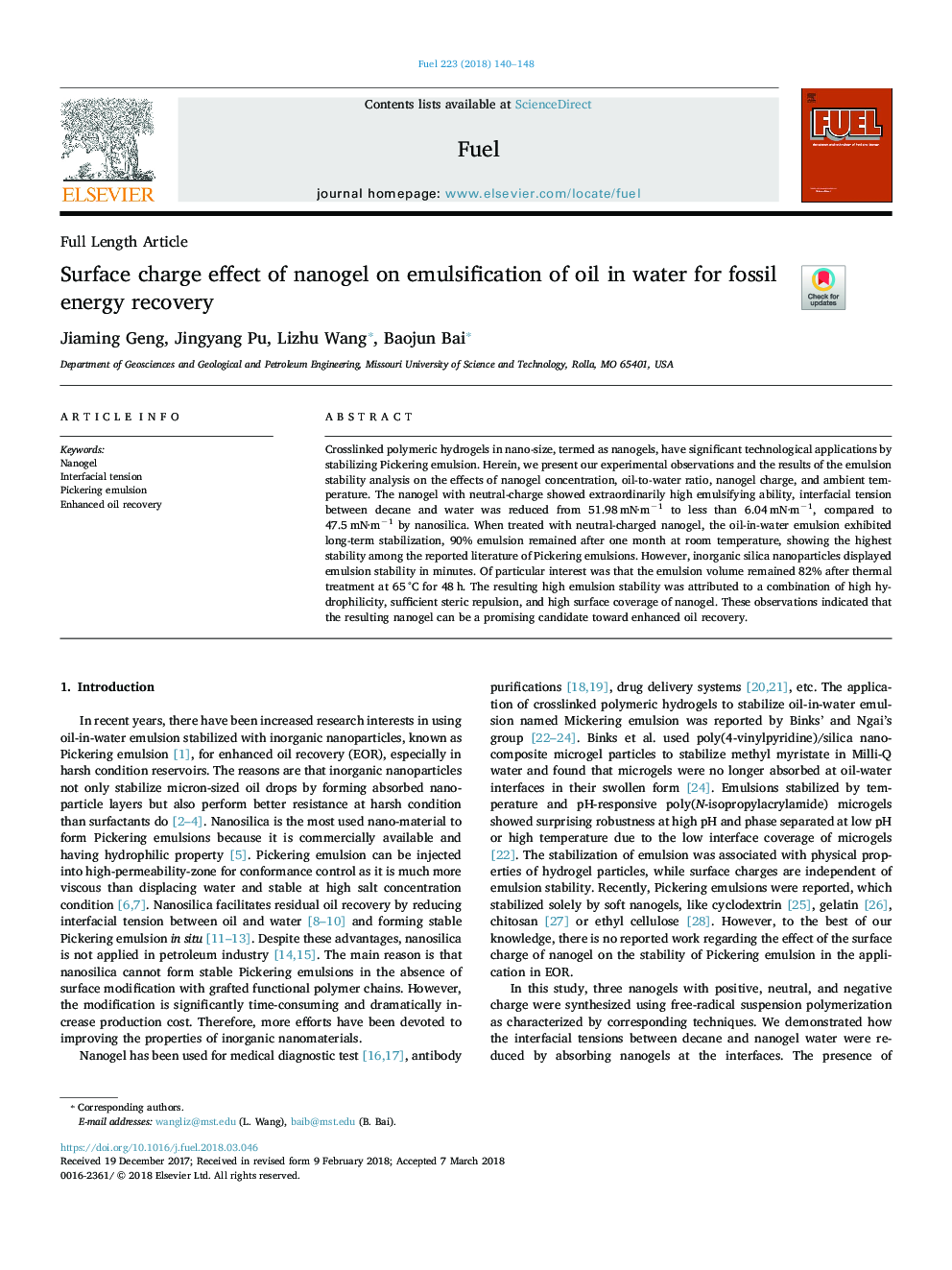| Article ID | Journal | Published Year | Pages | File Type |
|---|---|---|---|---|
| 6631255 | Fuel | 2018 | 9 Pages |
Abstract
Crosslinked polymeric hydrogels in nano-size, termed as nanogels, have significant technological applications by stabilizing Pickering emulsion. Herein, we present our experimental observations and the results of the emulsion stability analysis on the effects of nanogel concentration, oil-to-water ratio, nanogel charge, and ambient temperature. The nanogel with neutral-charge showed extraordinarily high emulsifying ability, interfacial tension between decane and water was reduced from 51.98â¯mN·mâ1 to less than 6.04â¯mN·mâ1, compared to 47.5â¯mN·mâ1 by nanosilica. When treated with neutral-charged nanogel, the oil-in-water emulsion exhibited long-term stabilization, 90% emulsion remained after one month at room temperature, showing the highest stability among the reported literature of Pickering emulsions. However, inorganic silica nanoparticles displayed emulsion stability in minutes. Of particular interest was that the emulsion volume remained 82% after thermal treatment at 65â¯Â°C for 48â¯h. The resulting high emulsion stability was attributed to a combination of high hydrophilicity, sufficient steric repulsion, and high surface coverage of nanogel. These observations indicated that the resulting nanogel can be a promising candidate toward enhanced oil recovery.
Related Topics
Physical Sciences and Engineering
Chemical Engineering
Chemical Engineering (General)
Authors
Jiaming Geng, Jingyang Pu, Lizhu Wang, Baojun Bai,
